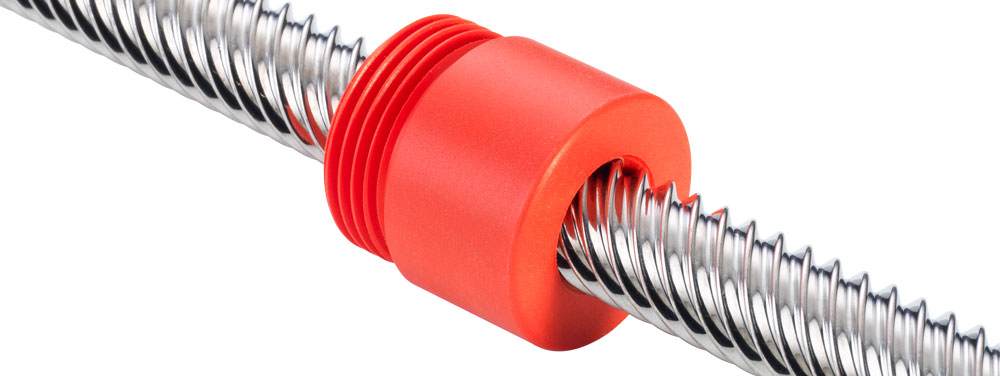Design and Theory

Lead screws are a precise, cost-effective tool for positioning light to medium loads along a linear axis.
How do lead screws work?
Lead screws are similar, in many ways, to a nut and a bolt. Lead screws are similar to a nut and a bolt in their simplicity of a simple nut running on a screw. The big difference is that nuts and bolts are used to fasten things together where lead screws are designed for moving things back and forth. The thread of the lead screws are specially designed and optimized for use in linear motion.
Lead screws are sometimes called ACME screws
"Lead screw" is a generic term referring to any threaded drive screw using sliding surfaces to transmit a load.
"ACME"
is a term that refers to a particular thread form. All ACME screws are
also lead screws, but not all lead screws are ACME screws. The ACME
thread standard is accompanied by specific classes such as 2G, 3G, 2C
etc., which have slightly different tolerances. ACME thread forms can be
easily checked using readily available thread gauges. The ACME thread
standard is designed for interchangeability and manufacturability.
Most lead screws used for linear motion are proprietary thread forms and not made to the ACME standard.


